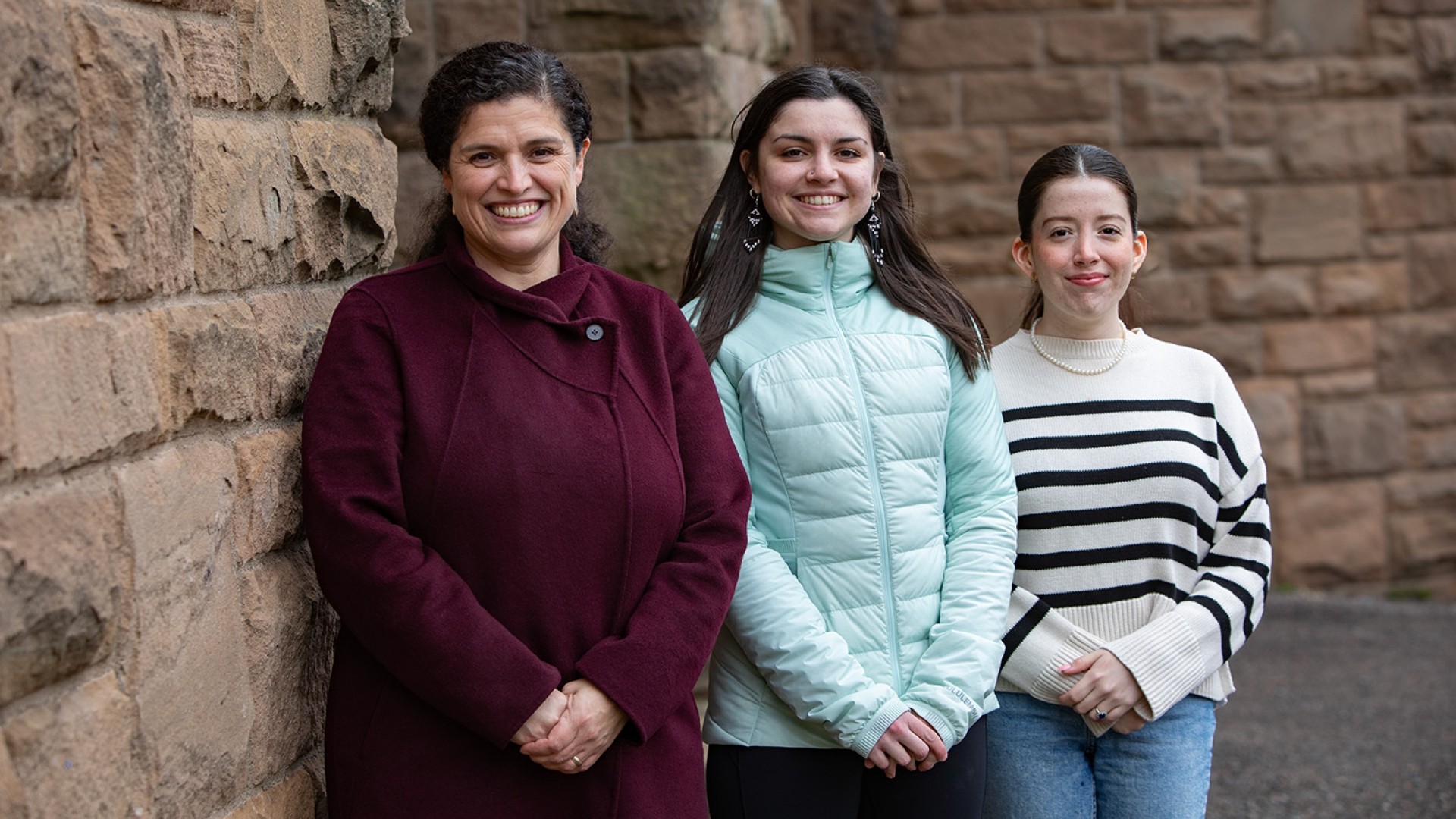
<p>In June 2021, StFX modern languages professor Dr. Maria Soledad Paz-Mackay and her colleague Dr. Argelia González Hurtado (St. Mary’s College of Maryland) received a three-year Insight Development Grant for the project “<em>Rediscovering Rural Landscape and Visualizing Emerging Identities in 21st Century Argentinean and Mexican Cinema</em>.” </p>
<p>They recently returned from a research trip to Mexico City. As part of this grant, they have already published a dossier in an open-access journal and an edited collection book , just released on March 6th. Additionally, they’ve involved eight undergraduate research students in the work.</p>
<p>“The funding allowed us to delve into enriching research to expand our knowledge of the centrality of landscape as a meaningful space in the film, composed in addition to the image, sound, and movement,” says Dr. Paz-MacKay. </p>
<p>“In the last three years, our mutual inquiry has developed into an active and fruitful collaboration. Many conversations, joint film viewings, searches in film archives, and combined readings have allowed us to analyze this element’s relevance as an aesthetic and narrative device.”</p>
<p>Dr. Paz-Mackay, a specialist in Argentinean film, and Dr. González Hurtado, whose expertise is in Mexican film, noticed a trend in 21st century films in which landscape emerged as a crucial element transmitting the urgency of issues affecting diverse Latin American societies.</p>
<p>“A lot of social and political change has happened in recent years, and it is represented in the films,” she says. They wanted to understand the meaning embedded in the rural landscape. </p>
<p>RESEARCH IN MEXICO CITY<br />
<br />
As a result of this project, they recently travelled to Mexico City for three weeks in February 2024 to study films in the Videoteca Digital “Carlos Monsivaís,” which holds 5,000 physical and digital titles. The National Film Archives of Mexico (Cineteca Nacional) holds the Videoteca, a library, and 12 cinemas. </p>
<p>“Mexico has a robust cinematic history, and this remarkable place helps to celebrate it. We spent most of our days watching films and consulting the material gathered for each selected film in the corpus at the library. We also had great conversations with Mexican experts at the Film Archives, who were incredibly generous with their knowledge and directed us toward many films with rural landscapes.”</p>
<p>Dr. Paz-Mackay says the experience was highly enriching. “We went with an idea and found it eye-opening to discover way more topics that we hadn’t considered, issues that we don’t hear about in Canada.” </p>
<drupal-media data-caption="L-r, Dr. Argelia González Hurtado, St. Mary’s College of Maryland, and StFX modern languages professor Dr. Maria Soledad Paz-Mackay at the Videoteca Digital “Carlos Monsivaís,” Cineteca<strong> </strong>Nacional, México&nbsp;City" data-entity-type="media" data-entity-uuid="e622391b-f27c-4539-9f28-539e1ce9e309" data-view-mode="inline_66" ></drupal-media>
<p>BOOK BRINGING CONVERSATION FORWARD</p>
<p>The two researchers celebrated another milestone on March 6th by publishing <a href="https://rowman.com/ISBN/9781666934250/Cinematic-Landscape-and-Emerging-… Landscape and Emerging Identities in Contemporary Latin American Film</em></a>.<br />
The edited collection, published by Lexington Books, offers diverse aesthetic and theoretical perspectives that build on previous studies about cinematic landscape and space while addressing it from a regional perspective. </p>
<p>“The core of the edited collection revolves around films in which landscape emerges as a crucial element to transmit the urgency of issues affecting diverse Latin American societies. These films represent emerging social actors, such as Indigenous groups, Afro-Latin Americans, LGBTQIA+ communities, migrants, environmentalists, and women,” Dr. Paz-Mackay says.</p>
<p>“We thought it important to bring these films that aren’t mainstream to the surface and look at the need of these directors to talk about these issues. We wanted to create the space and bring these excellent films to a wider audience and start that conversation.” </p>
<p>Their research includes fiction and documentary films and varied voices. Eleven chapters in the book are written by different authors, and the work includes conversations with filmmakers on how they are using landscape. </p>
<p>PROVIDING STUDENT OPPORTUNITIES</p>
<p>Throughout their research, Dr. Paz-Mackay says they were particularly grateful to create opportunities for undergraduate students and see the sense of a research community develop between them. </p>
<p>“We are incredibly grateful for the contributions made by our undergraduate research assistant students,” says Dr. Paz-Mackay, who has had four research assistants throughout the grant, including current students Isabelle Vautour and Pia Delgado-Anton. Dr. González Hurtado has also had four students involved.</p>
<p>It’s an excellent opportunity for students to learn new skills, to improve language fluency, and participate in a research community. From this experience, Ms. Vautour had the opportunity to present at the 2023 Annual Symposium of the Maritime Association of Hispanists (AHPA-Asociación de los Hispanistas de las Provincias del Atlántico) as well as at StFX Student Research Day. </p>
<p>“The research assistants work on a selection of contemporary films from Argentina and Mexico, where the rural landscape is central,” says Dr. Paz-Mackay. “They conducted numerous tasks such as film reviews, annotated bibliographies, and collecting stills of relevant rural landscapes from the selected films.”</p>
<p>StFX Angus L. Macdonald librarian Samantha Read has also provided extraordinary help to the research team, Dr. Paz-Mackay says. “She has helped us search and locate databases that are friendly to articles about Latin American films published in Spanish.” </p>
<p>EARLIER PUBLICATION, FUTURE WORK</p>
<p>Dr. Paz-Mackay and Dr. González Hurtado are also editors of the <a href="https://revistas.uncu.edu.ar/ojs3/index.php/cilha/issue/view/432"><em>D… Numero 39</em></a> (2023) on Cinematic Landscape in the open-access journal Cuadernos del CIHLA. The dossier titled “<em>Redescubriendo el paisaje en el cine del siglo XXI: identidades, espacios y reconfiguraciones</em>” is published in Spanish and was borne from a call for papers the editors made within Canada, the USA, and Latin American academia. The selection process was carefully undertaken, and the study of the Latin American cinematic landscape in the 21st century was prioritized. </p>
<p>“Dr. González Hurtado and I are currently working on a book to expand the study of this stimulating area. The new book will focus on analyzing cinematic landscapes in recent films from Argentina and Mexico,” says Dr. Paz-Mackay.<br />
</p>

